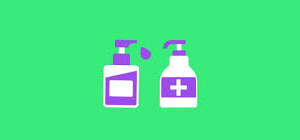
Evaless Patriotic Shirts For Women
August 29, 2022The popularity of Park Homes in older age
August 31, 2022Antiseptics are chemicals that kill bacteria. This means that they are effective against infections, but they also kill the resident skin flora. As such, antiseptics are important for skin disinfection and infection prevention. Antiseptics are not to be confused with antibiotics. Common antiseptics include iodine complexes. Other antiseptics used in hospitals are chloroxylenol and hexachlorophene. Quinolines are also used in disinfectants and surgical spirit.
Although the exact role of antiseptics in wound infection remains unclear, some recent studies have found that planktonic microbes and biofilm-bound microbes are considered the most important indications for antiseptic intervention. The most effective antiseptics are polyhexanide and octenidine dihydrochloride. As knowledge about the role of bioburden grows, new antiseptic strategies will emerge. To learn more about how to apply such treatments in Emergency First Aid Training Courses, visit a site such as https://www.tidaltraining.co.uk/emergency-first-aid-training-courses
Antiseptics must meet antimicrobial standards. The main goal of antisepsis is to inactivate pathogens, reducing biofilms and germs. Antiseptics also support wound healing. Polyhexamethylene biguanide has a positive effect on cell proliferation and regeneration. The iodine-based preparations are widely used, because they are gentle on the skin, are not associated with adverse reactions and kill infectious bacteria effectively.
Another antiseptic that is commonly used is iodoform. Iodoform can kill bacteria on surfaces, but it is not very effective against infected wounds. In addition, iodoform can be toxic to humans if ingested, so the substance should be applied carefully and only after determining whether it is safe to use. When bacteria enters an open wound, the resulting infection can result in fatal consequences if not treated with antiseptics.



